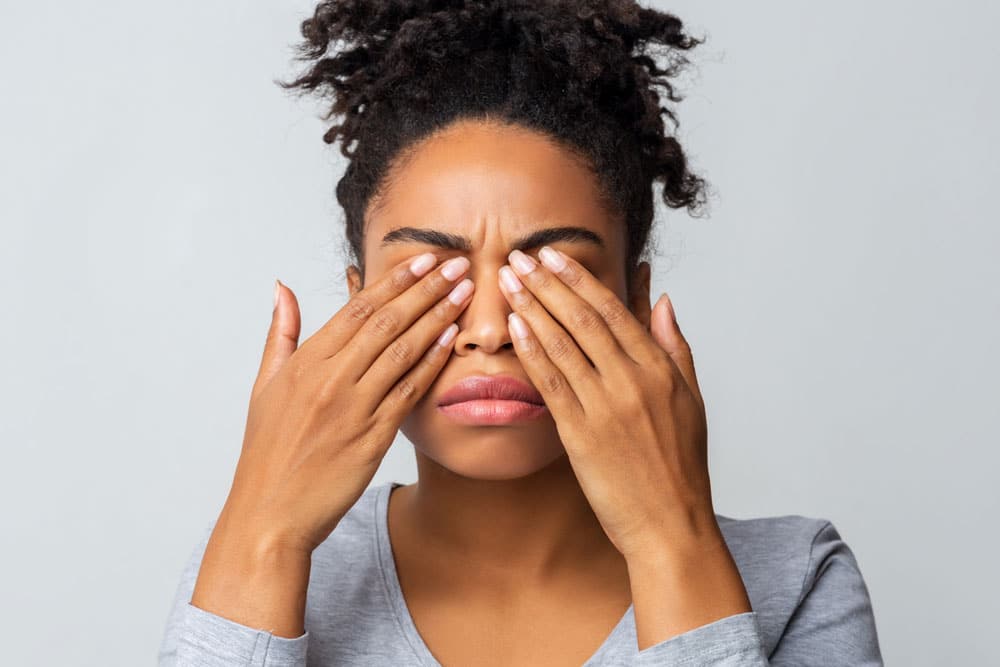
Dry eye is a well‐recognized, usually temporary side effect of LASIK. Thanks to advances in screening and surgical technique, most patients enjoy clear vision with minimal discomfort. At Barnet Dulaney Perkins Vision Center, we use the latest dry-eye diagnostics and tailored treatment plans to keep you comfortable before and after your laser vision correction.
During LASIK, a thin corneal flap is created and reshaped with a laser. This process temporarily severs corneal nerves that signal tear production. As those nerves regenerate—typically within 3–6 months—tear production can dip, leading to dryness, burning, or fluctuating vision.
A multicenter study published in Ophthalmology (2024) shows that 92% of LASIK patients experience mild dry-eye symptoms in the first week; however, only 8% report persistent dryness at 6 months when proactive treatment is applied.
Who’s at Higher Risk for Post-LASIK Dry Eye?
Identifying risk factors upfront allows us to customize your care plan and consider alternatives if needed. You may have an elevated risk if you:
- Have Pre-Existing Dry Eye: Moderate to severe dry eye at baseline increases post-LASIK symptoms.
- Are Over Age 50: Age-related tear-film changes make recovery slower.
- Take Certain Medications: Antihistamines, antidepressants, and some acne meds can reduce tear production.
- Have Autoimmune Conditions: Sjögren’s syndrome or rheumatoid arthritis disrupt normal tear-film biology.
- Live in Arid Climates: Low humidity and high screen use can exacerbate dryness.
If you recognize any of these factors, book a dry-eye screening before your LASIK consult.
Modern Dry-Eye Screening Before LASIK
We pair traditional exams with cutting-edge diagnostics to assess your tear health:
- Tear Osmolarity Testing: Measures tear-film salt concentration—a key marker for dry-eye severity (TearLab®).
- MMP-9 Biomarker Analysis: Identifies inflammatory markers linked to dry eye (Inflammadry®).
- Tear Breakup Time & Schirmer Test: Quantifies tear stability and production.
- Meibography: Infrared imaging of eyelid glands to detect early meibomian gland dysfunction.
With these tools, we create a personalized plan, ranging from prescription drops to in-office treatments, so your eyes are optimized for LASIK.
LASIK Alternatives for High-Risk Patients
If your screening shows severe dry eye or nerve-regeneration concerns, alternatives include:
- PRK (Photorefractive Keratectomy): Surface-only laser avoids flap creation, resulting in faster nerve recovery and less dryness.
- Visian Implantable Collamer Lens (ICL): No laser on the cornea means tear production is unaffected, making it ideal for thin corneas or high prescriptions.
- Refractive Lens Exchange (RLE): Premium lens implants correct vision and prevent future cataracts, with minimal dry-eye risk.
Managing Dry Eye After LASIK
Even with low risk, these strategies help you stay comfortable:
- Preservative-Free Artificial Tears: Use 4–6 times daily or as directed.
- Omega-3 Supplementation: 1,000–2,000 mg combined EPA/DHA for tear‐film health.
- In-Office Therapies: IPL (Intense Pulsed Light) or LipiFlow® meibomian gland treatment.
- Punctal Plugs: Temporary or permanent to retain natural tears.
- Environmental Adjustments: Humidifiers, screen-break routines, and UV-blocking eyewear outdoors.
Experiencing any post‐LASIK dryness? Contact our dry-eye specialists to fine-tune your care.
Myth vs. Fact
- Myth: “If you get LASIK, you’ll be permanently dry.”
Fact: Over 90% of patients have complete nerve regeneration and normal tear function by six months with proactive management.

